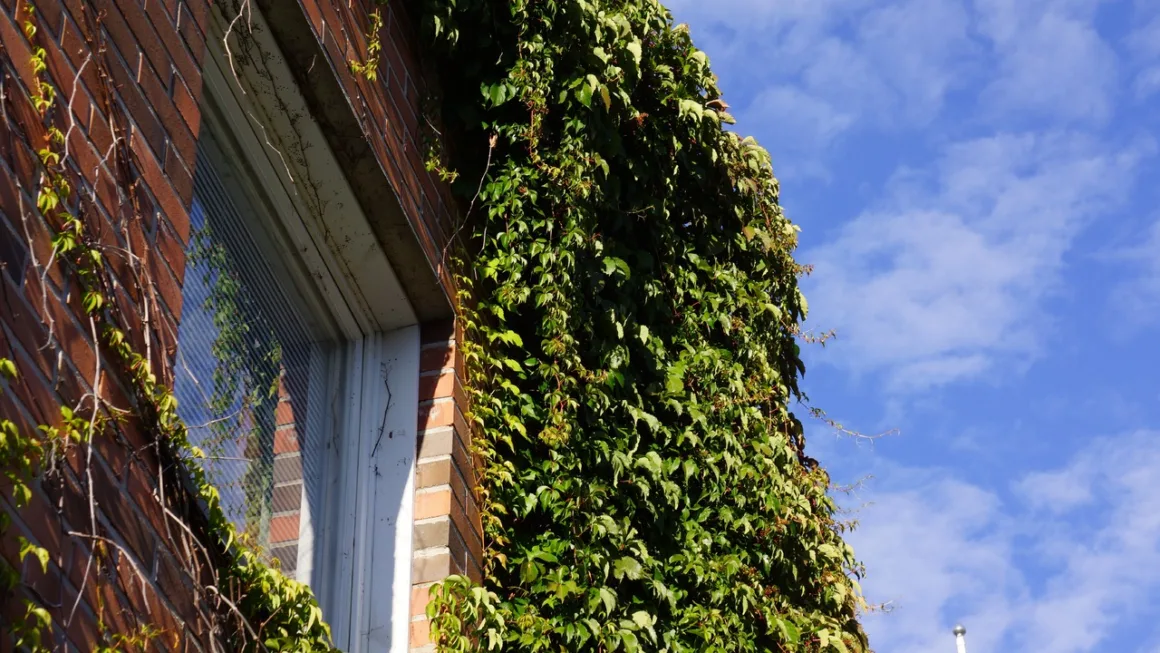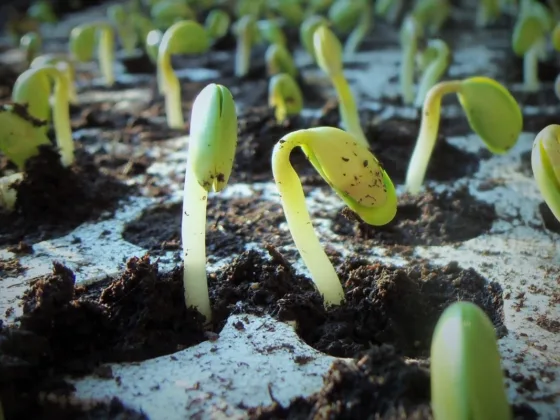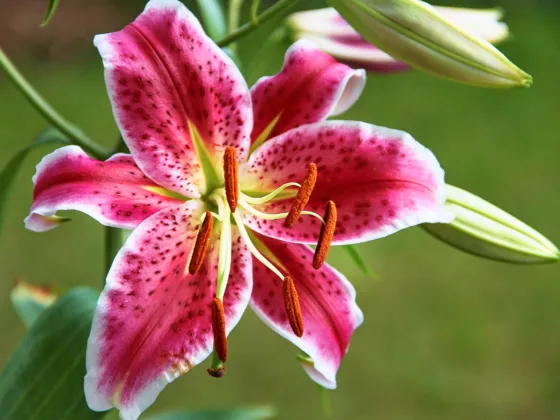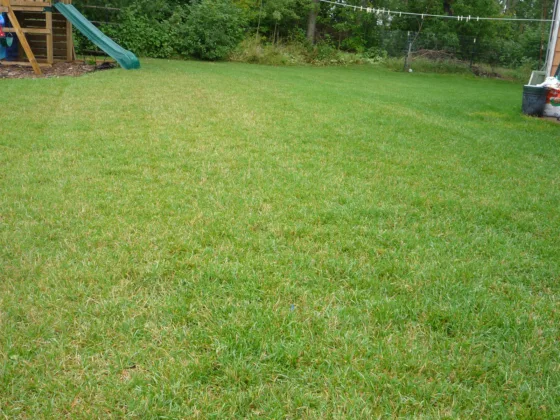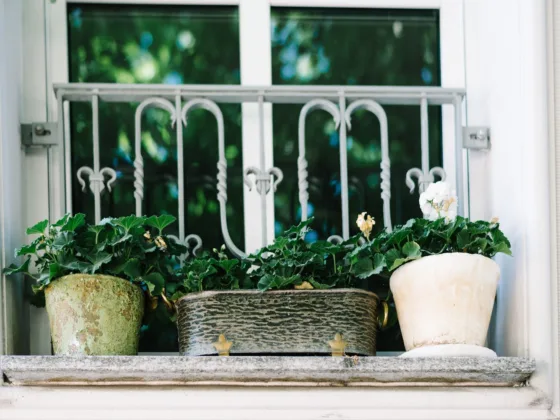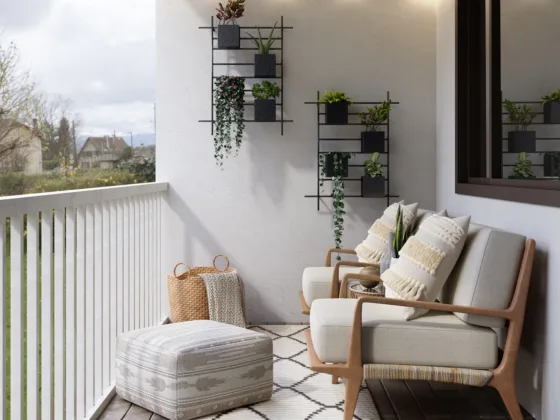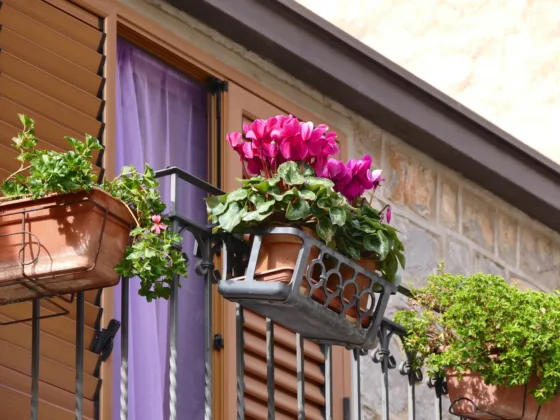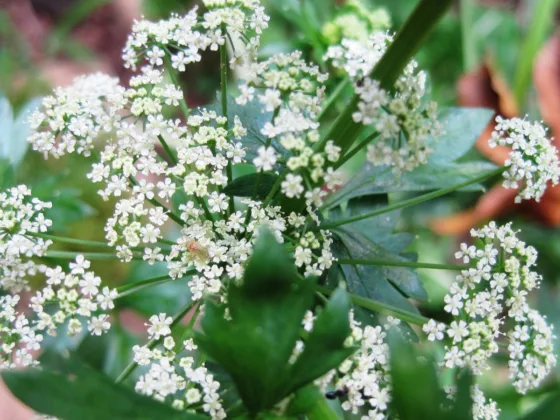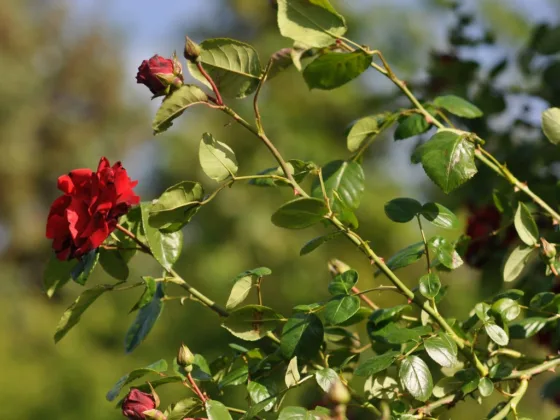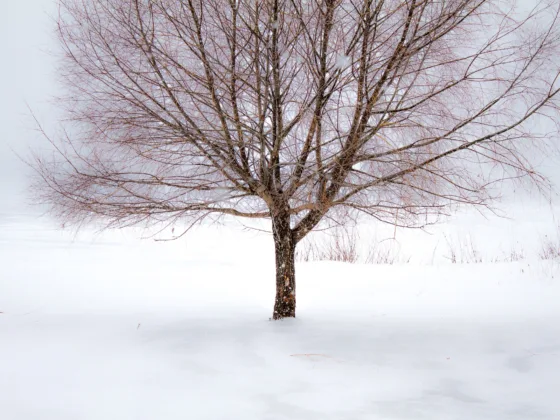Table of Contents Show
Vines are among the most wonderful plants garden artists have at their disposal. They are amazingly versatile, giving our landscapes a vertical component where trees and shrubs just won’t do the job for whatever reason.
They can provide dense screening when called upon to do so, and elevate delightful flowers to eye level. And there are more than a few that are hardy enough to come through our tough winters with nary a scratch.
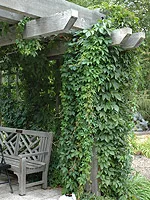
In this two-part series, we’re going to explore the wonderful world of vines in the home landscape. We’ll start this opening article by looking at the definition of vines and climbers, their characteristics and attributes, and how to use them in the landscape.
We’ll follow this with an article exploring many spectacular vines we can use in our northern gardens.
One special word of note; since we’re going to be examining vines from a landscape perspective, I’ll be focusing on woody and perennial vines that are intended to be planted towards a specific purpose for an extended duration, i.e. beyond just one season.
The theory I will be discussing also applies to annual vines and climbers in principle, although I won’t be bringing up any specific examples.
And with that said, let’s now boldly venture forth into the exciting world of vines and climbers!
Getting to Know Your Vines and Climbers
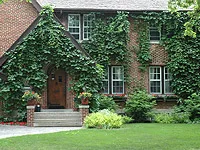
Technically, a vine is any plant with flexible stems that tends to grow upwards upon or along any vertical support or structure that it comes in contact with to bring its leaves and flowers into the sunlight.
These structures can be walls, fences, rocks, or even taller plants like trees and shrubs. In proper English, the term “climber” is synonymous with vine, although, in the popular vernacular, it is often used to refer specifically to woody shrubs that can climb structures with appropriate training.
From a landscape perspective, vines are selected for a particular application based on the fundamental attributes of color, form, and texture. Vines can be grown for their attractive or particularly dense foliage, their showy or fragrant flowers, or their delicious fruit.
Some have excellent fall colors, while others such as climbing hydrangea have interesting exfoliating bark. All are selected for their ability to extend this appeal into the vertical, especially where “standard” vertical plants such as trees would be too wide or voluminous.
Like all plants, different kinds of vines have their unique preferences for soil type and pH, sunlight, moisture conditions, and drainage. If you’re working with a specific plant, be sure to know its cultural preferences beforehand.
If you’re looking for a plant for a specific location, be sure to select plants that are suitable for those particular growing conditions. Generally speaking, however, you can’t go wrong with good quality garden soil high in organic matter and good drainage.
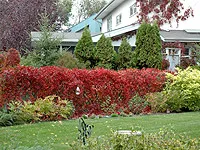
Give serious consideration to the placement of vines in the landscape or garden setting. Because they are often situated around or along structures and buildings, they can be affected by various attributes of these structures.
Walls can block elements such as sunlight and wind. This can work in favor of the plant by creating additional shelter, often allowing more tender varieties to be grown in a given hardiness zone.
On the downside, north-facing walls can create permanent shade making it impossible for any plant to grow. South and west-facing walls pose two problems.
First, white or light-colored walls can reflect sunlight in late winter, triggering the plants into premature growth and risking serious injury in subsequent freezes before the growing season begins. Also, these walls can reflect searing hot sunlight in mid-summer that can cook the plants to death.
Roof overhangs, fences, and eaves can create what’s known as a “rain shadow“. This is a strip of ground right next to the building or fence that is sheltered from the prevailing rains by the structure overhead, creating an artificially dry environment.
While older vines will have developed roots that reach away from the rain shadow, the resulting drought conditions are particularly tough on young vines, which will require supplemental moisture for as many as a few years until they are established.
Some vines, particularly clematis, prefer to have their roots kept cool while their top parts are enjoying the summer heat and sun. Either underplant them with low-growing shrubs or perennials to provide summer shade to their roots, or add a thick layer of mulch to keep the root zones cool.
Support Structures for Vines and Climbers
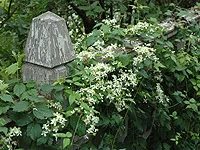
Vines are unique plants in terms of their vertical aspirations. They differ from other plants in that they will not grow vertically on their own to any appreciable degree.
Without a vertical structure to climb in their immediate vicinity, they will usually spread to form a groundcover, seeking out the nearest vertical element they can climb.
Some like the wintercreeper euonymus will form a shrub-like mound. But to grow vertically, all vines have to have something to grow vertically on.
There are two things to consider when designing an appropriate support structure for a vine. The first and most important is the way a particular plant attaches itself to the structure as it climbs.
Vines use several different methods to climb structures, and the vertical structure must facilitate the specific adhesion method of a particular vine.
Here are the most common means of adhesion:
Tendrils
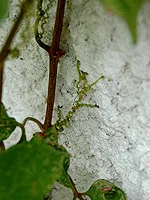
Popular vines such as grapes, Virginia creeper, and Boston ivy employ tendrils to secure themselves as they climb.
These are modified stems that are particularly supple when young, twining around virtually anything they come in contact with which has a small enough diameter. Once coiled around a structural element, they quickly harden into woody branches that effectively lock the plant rigidly to the structure.
Plants with tendrils are the easiest to secure; they will climb up wire, mesh, or lattice fences, arbors, pergolas, and virtually any structure with structural elements that have a diameter of an inch or less. They will even climb over other plants if allowed to!
Pads
A few vines have modified suction pads at the terminal ends of their tendrils (e.g. Virginia creeper, Boston ivy) or modified roots (e.g. English ivy, climbing hydrangea). Besides wrapping around small-diameter structural elements, they will also self-secure to masonry, bricks, stucco, and other rock and stone-based materials.
They secrete a substance that forms a surprisingly strong adhesive bond with mineral-based structures.
There is a popular myth that these vines will destroy masonry and stucco, but that is not necessarily true – while it is true that they form a bond that is strong enough to possibly tear out chunks of masonry if the vines are pulled, once they die, they will fall off quite easily, and the masonry or stucco is only left with some staining issues but no serious damage.
Twining
Almost all vines are capable of securing themselves to vertical structures by twining and winding their growing stems around vertical supports; this is a characteristic of their flexible stems.
For many vines – for example, clematis, wintercreeper, honeysuckle, bittersweet, trumpet vine, and wisteria – this is the only way they can climb structures. Vertical support structures for such vines must therefore encourage the vines to thread themselves in, around, and out the elements of the structure.
Lattice and chain link fences are particularly effective supports for twining vines. Often these will need some assistance to start them growing up structures when they are young.
Threading
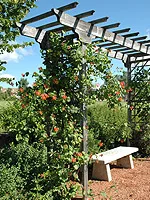
Some thick-stemmed vines, particularly honeysuckle, and woody shrubs such as climbing roses and wintercreeper euonymus, have relatively supple and flexible branches rather than flexible stems.
While they won’t naturally twine around structures, they can be readily threaded around vertical structures with a little intervention from the gardener.
The result is almost a cross between a trained plant and a vine; often the threaded branches become structural supports for lateral branches that splay and arch away from the structure in an attractive manner.
The second consideration is the weight the plants will exert on the structure when they are mature and fully developed. Some woody vines are more like shrubs or even small trees, just with rather flexible branches when they are young, and over time will develop massive trunks and structural branches that weigh as much as a mature tree.
Wisteria and grapes are two woody “tree vines” that develop such thick trunks and heavy branches that they have been known to bring down weaker supports with age.
For such plants, special support structures are required that are capable of handling that kind of weight. Forget about twining wisteria or grapes on lattice or light-duty fences; they will destroy them in a few short years. These need either 4 x 4 posts or even metal posts with rigid lateral members to support the ultimate weight.
Some of these vines can be trained to grow as trees. Simply provide strong vertical support to the primary vine when young, which will ultimately become the “trunk“. Train it to grow upwards, and keep it pruned to be a single stem at the base, always encouraging the new growth at the terminal ends.
In time, the trunk will be strong enough to support the entire vine, although the newly forming stems will always grow directly toward the ground and will need to be either trained or pruned every year.
Vertical Landscape Applications
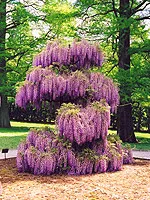
Vines are incredibly versatile in the modern landscape, offering a degree of functional sophistication and charm that few other plants can. They are also relatively underutilized (except on the campuses of ivy league schools) and somewhat misunderstood as to their landscape capabilities.
Here are just a few things that vines can do in the landscape:
1. Introducing vertical greenery to a tight or narrow spot
Space is often at a premium in modern landscapes, particularly in the smaller lots of today’s suburbia. While trees have the natural ability to extend the landscape vertically, they are often too wide-spreading or excessively large for use in such smaller landscapes.
This is where vines can come to the rescue, bringing a vertical dimension to the garden while only taking up a foot or less of precious width.
2. Screening a see-through fence
Vines are an excellent screening option for the home landscape, especially in narrow spaces. They can be used to “finish” loose walls like chain-link fences and lattice panels with greenery and flowers, and they can fill in open spaces by trailing and twining their way in between.
Choose particularly dense vines to provide excellent enclosure.
3. Cover the side of a solid structure, fence, or building to add interest and soften the look
Nothing is more obtrusive in the modern landscape than a stark, blank expanse of wall or fence. Nature is much more interesting than this, and vines are a wonderful way to introduce such interest to these manmade structures.
Their stems, foliage, and growth habits can add texture and dynamics, and the flowers and leaf colors can naturalize and soften the appearance of harsh structures, all without taking up too much, if any real estate.
4. Adding “green roofs” to arbors and pergolas
Vigorous vines will naturally climb up the sides of arbors and pergolas and eventually spread across the top, basking in the abundant sunlight above. This not only softens them as artificial structures but also creates a green or flowery canopy for your garden wanderers to pass through or underneath.
Shade a reading nook or outdoor dinette set from overhead with a trailing vine. It’s a popular trick of some of the finer show gardens around the world, and it will work in your yard too!
5. Creating a vertical flowering plant using a stand-alone structure
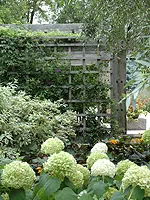
Vines love to climb, and if allowed to climb a stand-alone structure, can create a new and distinctive plant form from it. They will ramble over and fill in raised garden structures of various shapes to form interesting mounds, pillars, or columns of greenery.
Want a showy flowering tree for mid-summer? How about training a clematis or two up a free-standing metal frame? The neighbors will be envious, that’s for sure!
6. Climbing trees
Certain vines such as English ivy and Virginia creeper can be used to climb up the trunks of trees and into the branches. On mature trees, this can add a dramatic textural effect reminiscent of the stately manors of the deep South.
However, this is not recommended on younger trees (lower than 20-30′ tall), as these vines can actually out-compete with them for sunlight and thus stunt their growth.
********
And here’s what you need to know about growing and using vines and climbers in your landscape. In the next article, we’ll have a look at some excellent choices for your northern gardens.
